您好,登录后才能下订单哦!
小编给大家分享一下python光学仿真通过菲涅耳公式如何实现波动模型,相信大部分人都还不怎么了解,因此分享这篇文章给大家参考一下,希望大家阅读完这篇文章后大有收获,下面让我们一起去了解一下吧!
从物理学的机制出发,波动模型相对于光线模型,显然更加接近光的本质;但是从物理学的发展来说,波动光学旨在解决几何光学无法解决的问题,可谓光线模型的一种升级。从编程的角度来说,波动光学在某些情况下可以简单地理解为在光线模型的基础上,引入一个相位项。
一般来说,三个特征可以确定空间中的波场:频率、振幅和相位,故光波场可表示为:
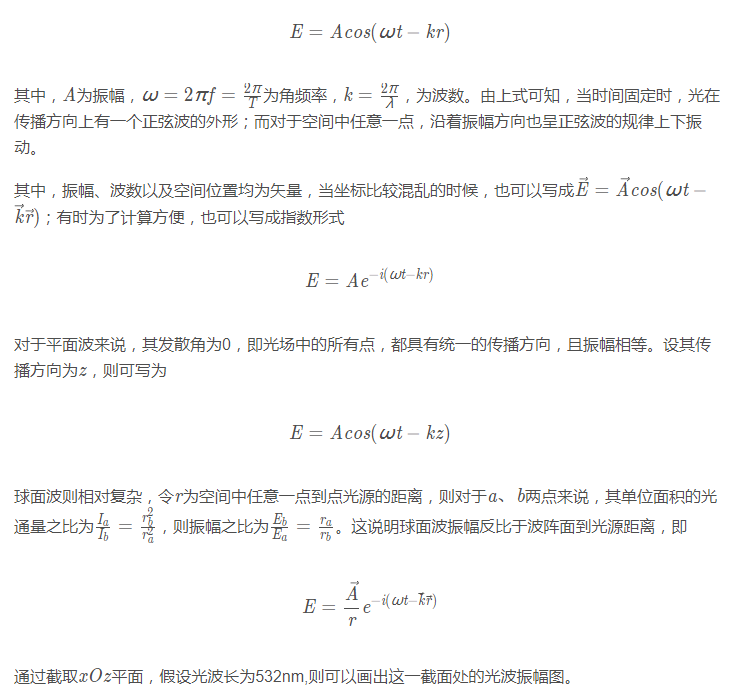
import numpy as np import matplotlib.pyplot as plt from mpl_toolkits.mplot3d import Axes3D z = np.arange(15,200)*10 #单位为nm x = np.arange(15,200)*10 x,z = np.meshgrid(x,z) #创建坐标系 E = 1/np.sqrt(x**2+z**2)*np.cos(2*np.pi*np.sqrt(x**2+z**2)/(532*1e-9)) fig = plt.figure() ax = Axes3D(fig) ax.plot_surface(x,z,E) plt.show()
其结果如图所示
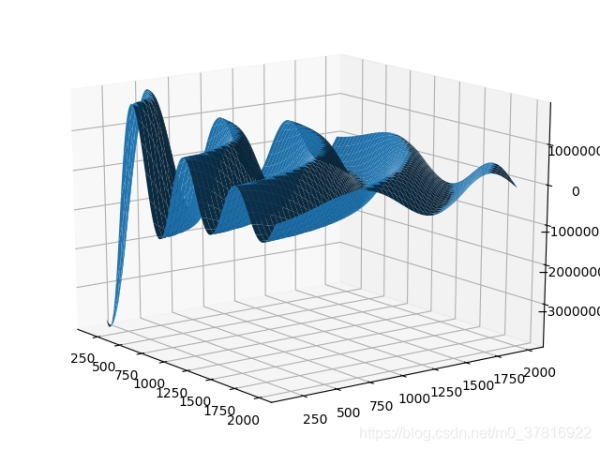
几何光学可以通过费马原理得到折射定律,但是无法获知光波的透过率,菲涅耳公式在几何光学的基础上,解决了这个问题。
由于光是一群横波的集合,故可以根据其电矢量的震动方向,将其分为平行入射面与垂直入射面的两个分量,分别用 p分量和 s 分量来表示。一束光在两介质交界处发生折射,两介质折射率分别为 n1和 n2,对于 p光来说,其电矢量平行于入射面,其磁矢量则垂直于入射面,即只有s分量;而对于 s光来说,则恰恰相反,如图所示。
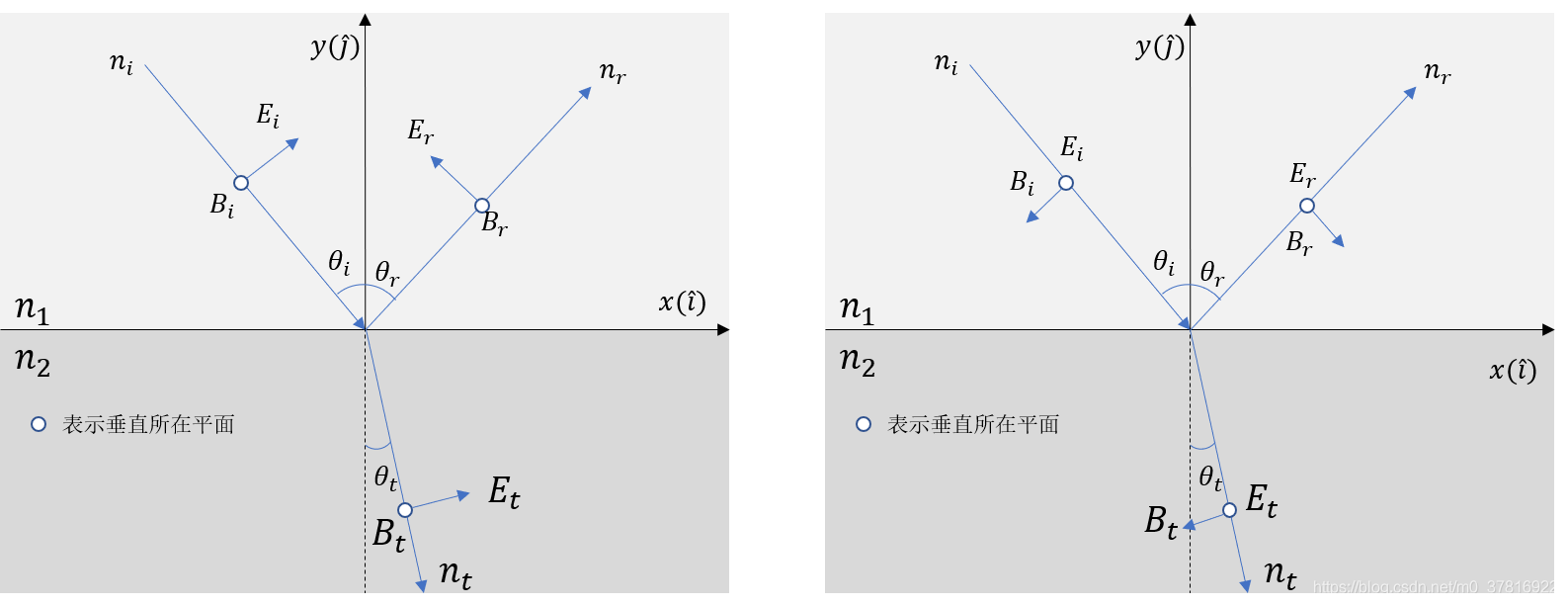
则对于 p 光来说即
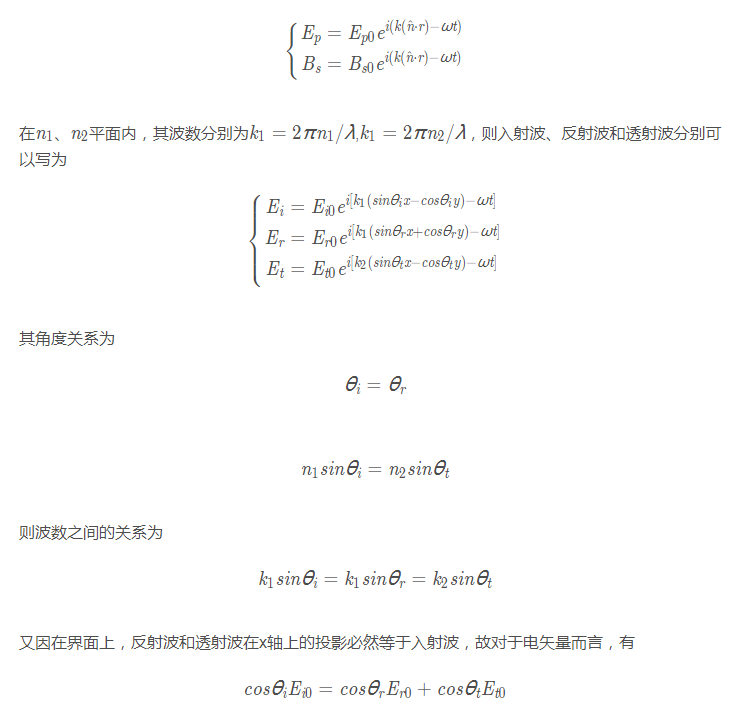
对于磁矢量而言,有
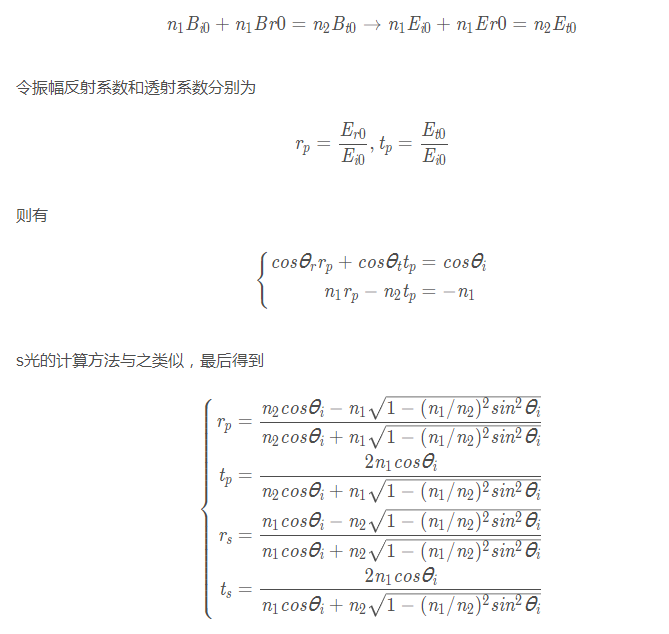
我们可以通过python绘制出当入射光的角度不同时,其振幅反射率和透过率的变化
import matplotlib.pyplot as plt import numpy as np def fresnel(theta, n1, n2): theta = theta*np.pi/180 xTheta = np.cos(theta) mid = np.sqrt(1-(n1/n2*np.sin(theta))**2) #中间变量 rp = (n2*xTheta-n1*mid)/(n2*xTheta+n1*mid) #p分量振幅反射率 rs = (n1*xTheta-n2*mid)/(n1*xTheta+n2*mid) tp = 2*n1*xTheta/(n2*xTheta+n1*mid) ts = 2*n1*xTheta/(n1*xTheta+n2*mid) return rp, rs, tp, ts def testFres(n1=1,n2=1.45): #默认n2为1.45 theta = np.arange(0,90,0.1)+0j a = theta*np.pi/180 rp,rs,tp,ts = fresnel(theta,n1,n2) fig = plt.figure(1) plt.subplot(1,2,1) plt.plot(theta,rp,'-',label='rp') plt.plot(theta,rs,'-.',label='rs') plt.plot(theta,np.abs(rp),'--',label='|rp|') plt.plot(theta,np.abs(rs),':',label='|rs|') plt.legend() plt.subplot(1,2,2) plt.plot(theta,tp,'-',label='tp') plt.plot(theta,ts,'-.',label='ts') plt.plot(theta,np.abs(tp),'--',label='|tp|') plt.plot(theta,np.abs(ts),':',label='|ts|') plt.legend() plt.show() if __init__=="__main__": testFres()
得到其图像为
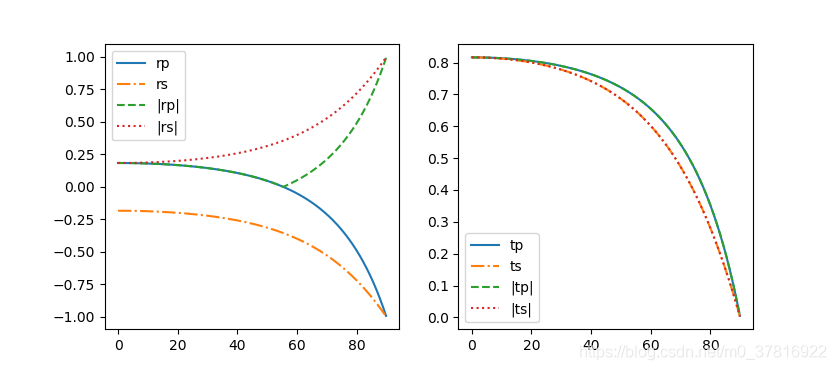

通过python进行绘图,将上面程序中的testFres改为以下代码即可。
def testFres(n1=1,n2=1.45): theta = np.arange(0,90,0.1)+0j a = theta*np.pi/180 rp,rs,tp,ts = fml.fresnel(theta,n1,n2) Rp = np.abs(rp)**2 Rs = np.abs(rs)**2 Rn = (Rp+Rs)/2 Tp = n2*np.sqrt(1-(n1/n2*np.sin(a))**2)/(n1*np.cos(a))*np.abs(tp)**2 Ts = n2*np.sqrt(1-(n1/n2*np.sin(a))**2)/(n1*np.cos(a))*np.abs(ts)**2 Tn = (Tp+Ts)/2 fig = plt.figure(2) plt.subplot(1,2,1) plt.plot(theta,Rp,'-',label='R_p') plt.plot(theta,Rs,'-.',label='R_s') plt.plot(theta,Rn,'-',label='R_n') plt.legend() plt.subplot(1,2,2) plt.plot(theta,Tp,'-',label='T_p') plt.plot(theta,Ts,'-.',label='T_s') plt.plot(theta,Tn,'--',label='T_n') plt.legend() plt.show()
得
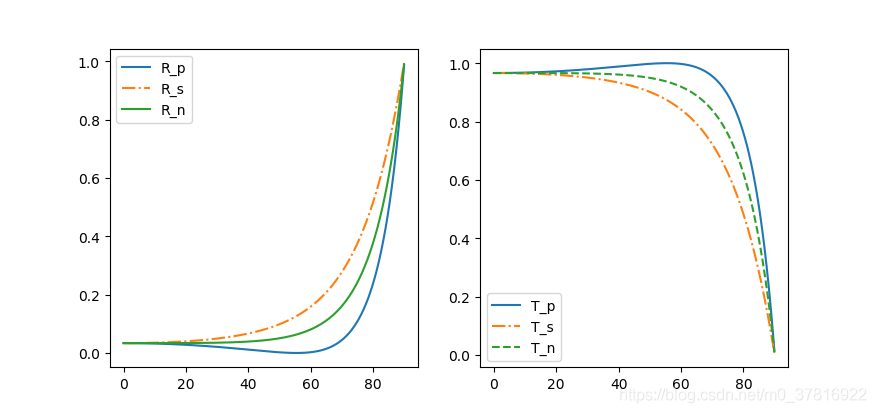
以上是“python光学仿真通过菲涅耳公式如何实现波动模型”这篇文章的所有内容,感谢各位的阅读!相信大家都有了一定的了解,希望分享的内容对大家有所帮助,如果还想学习更多知识,欢迎关注亿速云行业资讯频道!
免责声明:本站发布的内容(图片、视频和文字)以原创、转载和分享为主,文章观点不代表本网站立场,如果涉及侵权请联系站长邮箱:is@yisu.com进行举报,并提供相关证据,一经查实,将立刻删除涉嫌侵权内容。